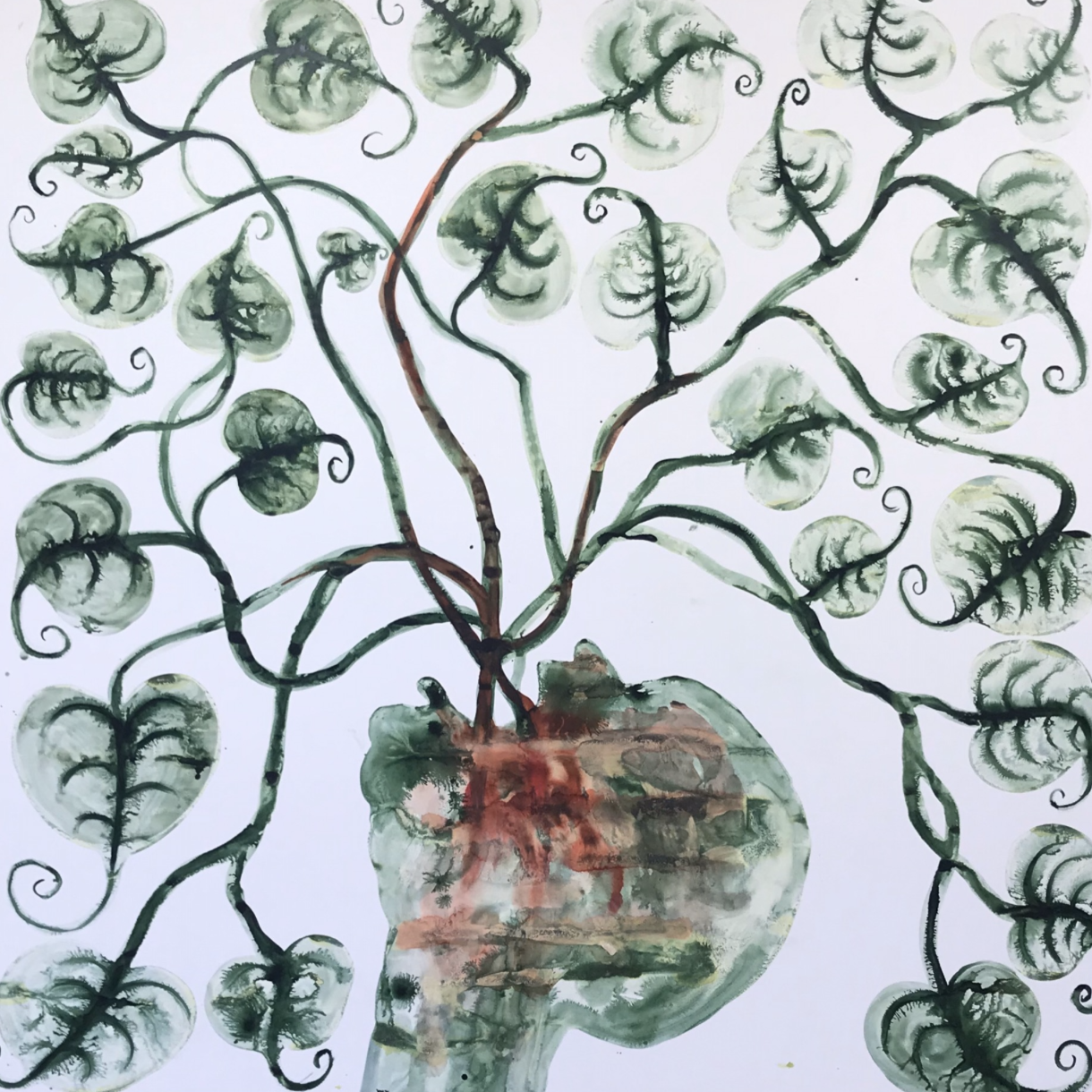Barthélémy TOGUO
Barthélémy Toguo was born in 1967 in Mbalmayo (Cameroon). He lives and works between Bandjoun (j) and Paris. Ecole Nationale supérieure des Beaux-Arts, Abidjan, Ivory Coast. Higher Education College for police of Frankfurt. Ecole supérieure d’Art, Grenoble, France. Kunstakademie, Düsseldorf, Germany. Chevalier des arts et des lettres de la République française.
A multidisciplinary artist, his work is exhibited worldwide. In 2008, he created Bandjoun Station, a place of devoted to artistic residencies and exchanges located in the highlands of western Cameroon.
A man of conscience and commitment, Barthélémy Toguo has been exploring the complex relationship between Man and Nature since the 1980s. He explores this theme through a variety of media: lithographs, drawings, photographs, but also and above all through the use of Indian ink on wet canvas, a technique he has refined over the years.
With the “Homo Planta” exhibition, Barthélémy Toguo proposes a journey through his eyes into his world, a presentation of the emotions and thoughts he has been refining for many years, an exhibition of what he considers to be at the centre of our relationship with plants. His aim is not to criticize society, but simply to establish the facts, to observe the world as it is: in full evolution, and to which he wishes to contribute his reflection. It is “an evolution that is often violent, dangerous, sometimes deadly, unjust, but also the foundation of a new society that is expected, for which everyone must take responsibility”. Barthélémy Toguo is also involved in Bandjoun, his father’s village in Cameroon, where he took the bold step of founding his own collective, Bandjoun Station, dedicated to contemporary African art and its artists, and where he works for artistic and agricultural development and awareness.
“I work on subjects related to man and his plant environment”. “It is the dramatisation of a world that becomes totally botanical. Suffering and beauty are part of my work. The characters become mutant plant bodies that start to dance. It’s a choreography with moving vines, touching leaves, bodies that extend themselves. The flowers are clues to the celebration of life that takes place in these works. The exhibition evokes the presence of man in nature, in harmony. We must respect and protect the planet. When there are no more plants, it’s death. There is always an ambivalence in my work, these paths with multiple interpretations because there is the artist’s wish that people communicate more at the same time as we participate in a society that lives with violence; hence these little dots, these nails in the head… There is a beauty in these drawings through the technique used, which is watercolour, and this green which tries to camouflage the violent red, but the green can appear as a celebration of life. My work is always a place where violence rubs shoulders with pleasure, pleasure with pain, sexuality with war, which in turn rubs shoulders with loneliness. Nature is celebrated, the human being is assaulted by the world. A work surface for me is an encounter of human feelings, like a celebration of life.”
Presentation of the work exhibited in the winery
Acquisition date: September 2018
Exhibited opposite the front door.
Déluge VI, 2016
Ink on paper affixed to canvas


